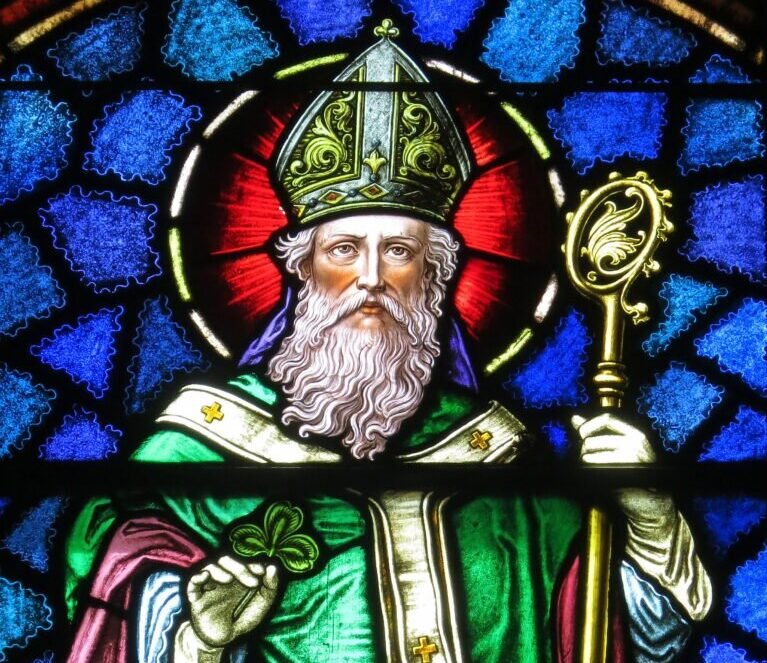Contents
ToggleIn short
Saint Patrick's Day, or Saint Patrick's Day (Lá Fhéile Pádraig), is a cultural and religious celebration that takes place on March 17, the traditional date of the death of Saint Patrick (c. 385 – c. 461), the first patron saint of Ireland.
Saint Patrick, patron saint of Ireland
Saint Patrick was a 5th-century Roman-British Christian missionary and bishop in Ireland. Much of what is known about Saint Patrick comes from the Declaration, said to have been written by Patrick himself. He is believed to have been born in Roman Britain in the 4th century, into a wealthy Roman-British family. His father was a deacon and his grandfather was a priest in the Christian church.
According to the Declaration, at the age of sixteen he was kidnapped by looters Irish and taken as a slave to Gaelic Ireland. He says he spent six years there working as a shepherd and during that time he found God. The Declaration says that God told Patrick to flee to the coast, where a ship would be waiting to take him home. After returning home, Patrick became a priest.
According to tradition, Patrick returned to Ireland to convert the pagan Irish to Christianity. The Declaration says that he spent many years evangelizing in the northern half of Ireland and converted thousands.
Patrick's efforts were eventually transformed into an allegory in which he drove "snakes" out of Ireland, despite the fact that snakes were not known to inhabit the region.
Tradition has it that he died on March 17 and was buried at Downpatrick. Over the following centuries, many legends grew up around Patrick and he became Ireland's greatest saint.
Celebrations usually involve public parades and festivals, traditional Irish music sessions (céilithe) and the wearing of green clothing or shamrocks. There are also formal gatherings such as banquets and dances, although these were more common in the past. St. Patrick's Day parades began in North America in the 18th century, but did not spread to Ireland until the 20th century.
Participants typically include marching bands, military, firefighters, cultural organizations, charities, voluntary associations, youth groups, fraternities, etc. However, over time, many parades have become closer to a carnival. More effort is being made to use the Irish language, particularly in Ireland, where from March 1 to St. Patrick's Day on March 17 is Seachtain na Gaeilge.
On Saint Patrick's Day, it is customary to wear shamrocks, green clothing or green accessories. Saint Patrick is said to have used the shamrock, a three-leafed plant, to explain the Holy Trinity to the pagan Irish. This story first appears in writing in 1726, although it may be older.
In pagan Ireland, three was a large number and the Irish had many triple deities, which may have aided St Patrick in his evangelism efforts. Jack Santino speculates that it may have represented the regenerative powers of nature and was recast in a Christian context—icons of St Patrick often depict the saint “with a cross in one hand and a sprig of shamrocks in the other ".
The first association of the color green with Ireland comes from a legend from the 11th century Lebor Gabála Érenn (The book of the capture of Ireland). He speaks of Goídel Glas (Goídel the Green), the eponymous ancestor of the Gaels and creator of the Goidelic languages (Irish, Gaelic Scottish, Manx). Goídel is bitten by a venomous snake but saved from death by Moses placing his staff on the snakebite, leaving him with a green mark. His descendants settled in Ireland, a land free of snakes. One of them, Íth, climbs the Tower of Hercules and is so captivated by the sight of a beautiful green island in the distance that he must immediately set sail
Social networks
Today, the Irish celebrate Saint Patrick's Day. Patron saint of Ireland, he helped bring and spread Christianity in this country, whose symbol is the flight of serpents from the island and the shamrock symbol of the Trinity. #mythology #myth #legend #calendar #March 17 #ireland #saintpatrick
Picture
